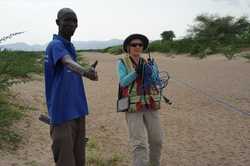 Peter and Erin laying cable and placing electrodes in the Laga (dry river bed) near the Well 4 cluster and several hand dug wells at the north end of Kakua 1. Kakuma 1 was the original camp of the Lost Boys of Sudan when they first arrived, beginning in 1991. Our plan for our first few days of surveying is to tie our lines to existing boreholes so as we can develop confidence in our interpretations of the data.
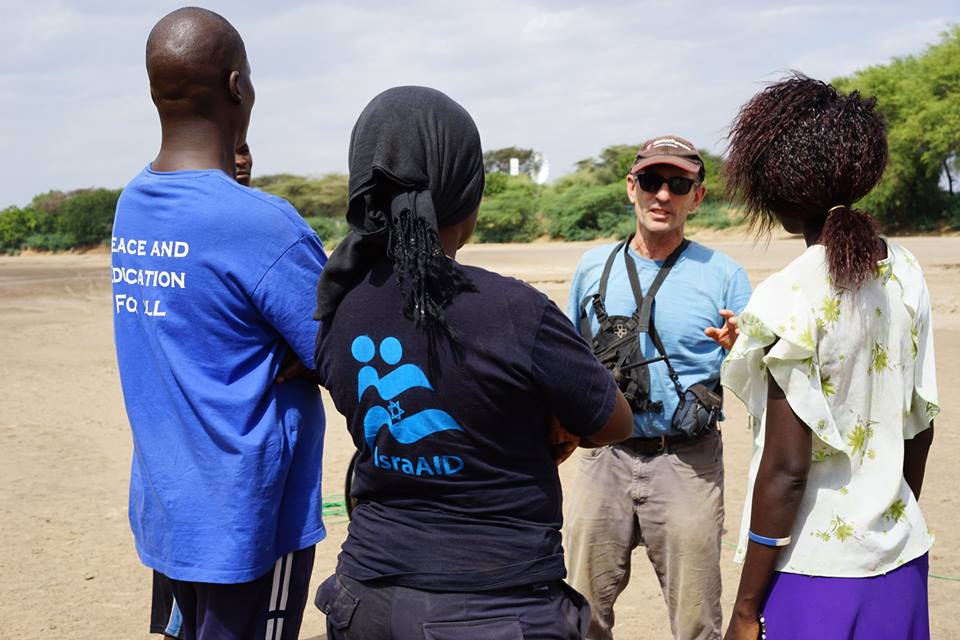 Paul explaining the plan for the afternoon to 3 Turkana students, from left, William, Asha, and Lokitoe (Loki). All 3 students graduated from IsraAID’s advanced 8 month WASH (WAter, Sanitation, and Hygiene) course, and have already been introduced to field geophysics and water exploration through the course.
0 Comments
#tbt to the first time in KakumaOn my first trip to Kakuma and the Kakuma Refugee Camp in October 2014, I taught a 2 week course in groundwater and geophysical water exploration to students who consisted of refugees and host community Turkana. This short course was part of a larger WASH (Water, Sanitation, and Hygiene) program presented by the NGO (Non-Governmental Organization) IsraAID. Besides improving the overall water situation in the Camp, the program was designed to improve peoples' livelihoods by giving them the tools needed for further education, employment or internships with the Turkana County public utility, or opportunities with other NGOs working within the Camp. It was through this experience I was able to see and hear first hand the challenges of water supply in this remote corner of Kenya. It was this knowledge that prompted me to prepare the technical material for an IsraAID application for a humanitarian aid grant with the GWB (Geoscientists Without Borders) foundation of the SEG (Society of Exploration Geophysicists). Why would 7 Calgarians voluntarily come, again referring to Dave Eggers biography (Achak Deng’s autobiograph) What is the What, to “a place in which no one, simply no one but the most desperate, would ever consider spending a day?” Achak Deng goes on to expand on his initial impressions of Kakuma in 1992,after walking across the deserts and swamps of Sudan…”it is not the worst place on the continent of Africa, but it is among them.” Fortunately, we don’t have a lot of time to think about why we are here, as our days start with a 6:30 AM loading of equipment, chai mendazi, a drive to our next survey location, a long day of field work, shower, dinner, data processing and sleep…not much different than home, and those 38 degree temperatures and the punishing sun keep one from getting too philosophical. Today, we were back in the Turkana community immediately north of the Camp, carrying out a seismic survey to find the areas of deepest bedrock. While the bedrock (that is the volcanic rock underlying the overlying sands and clays) is sometimes a productive aquifer, the water produced from the bedrock aquifers is often very high in fluoride. Fluoride is one of those elements that is very healthful in low concentrations, but can cause dental and skeletal fluorosis at high concentrations. As such, our objective in this northern area is to search for areas of deeper bedrock where high water production wells with low fluoride concentrations can be drilled. Even this close to Kakuma town, the Turkana in this area are largely pastoralists, living in igloo like structures called manyatas, made of branches and leaves, and built in a half day by the women. They take advantage of a water tap located in the wellfield, but otherwise their livelihoods are derived from their livestock, and perhaps selling wood or charcoal to the refugees for cooking fuel. The well field where we were working today is one of the few forested areas of Kakuma. Young children can be seen high in the trees chopping away at branches with machetes to harvest cooking fuel. A large bundle of firewood will fetch 100 Kenyan shillings in the Camp, or about $1; a bundle of not too crooked branches to be used for building fences or roofing in the Camp will bring $1.50. All day women were passing along our lines balancing massive bundles of wood on their heads, and often carrying 20 liter jerry cans of water as well. Of course they would often stop by our seismic recording station to quality control the data, and perhaps to see if we had any extra chewing tobacco. IsraAID’s Turkana and refugee students are now largely running the seismic surveys, including planting geophones, running the GPS, laying cable, operating the truck mounted seismic source, and doing those things that Turkana are particularly good at such as keeping goats off the line and camels from eating our cables. The shooting went faster than expected today, so Colin Miazga and Franklin Koch, our University of Calgary Ph.D. intern, gave the students a late afternoon data processing tutorial. Of course I expect we will get payback with a far more interesting tutorial on cattle raiding that our Alberta farm boy Landon Woods in particular can benefit from. We finished the day by walking on the bridge across Laga Tarach for nyama choma – roasted goat meat – at the White House, one of three such establishments in Kakuma along with Camels and Unity. In a town that is off the grid and has enough generators to power a few light bulbs, but certainly not a refrigerator, you can usually be confident that at least your food is either canned or very fresh.
Wednesday January 13, 2016
It is the first day we finished well before dark. We certainly had time to collect more data, but a few stressful incidents persuaded us to call it quits after we had reached our primary goal for the day. We worked today in a well field 2 kilometers north of the Camp. The geology of Kakuma is very simple – and very complex. It’s simple because it is essentially the edge of a basin, or let’s say a dish, filled with sediment. It’s complex because that dish is made of a variety of volcanic rocks, and the depth of that dish rapidly varies with the volcanic rock sometimes coming to surface, and then quickly deepening to many tens of meters. And the sediment can be sand, clay, volcanic gravels, sand and clay, saturated with fresh water, saturated with salt water, or all of the above. Complex geology makes the interpretations of the geophysical results complicated and uncertain. So, to remove some of the uncertainty, we try to run our geophysical lines through boreholes of known geology. Of the 50 or more boreholes in Kakuma, only 10 or so have good geologic descriptions; and of those, only 6 or so actually intersect bedrock. So in these early days of our program, water well BH7, about a kilometer north of the Camp, was an important well through which to run our survey. And being outside of the Camp, we thought the going would be easy – no soccer games, no kids playing tug-of-war on our cables, no throngs of curious onlookers in a place where there simply is not much to do. Unfortunately, we were wrong. Soon after unloading our gear and locating the well of interest, we started scouting the line….no refugees, but thickets of thorny acacia, herds of camels and goats and donkeys (all for food), and a maze of thorn fences comprising Turkana compounds and corrals. Fortunately, Jack of IsraAID had done a great job of making sure there was at least one Turkana WASH student in each field crew. With Peter Kuya, we worked our way down our planned line, slashing away at brush with machetes, and explaining to the Turkana elders that we were exploring for water, we were not exploring for oil, the information could be used for refugees and Turkana, etc. And lots and lots of hand shaking and greetings in Turkana and Swahili. After a few hours of this we thought we had the green light, and began laying cable. That’s when the head of the village came out waving his goat herding stick and looking angry. “We Turkana never benefit from any of these boreholes!” Meanwhile, 30 m away there is a water tap from BH7 that all morning has seen a steady stream of Turkana men bathing, Turkana women filling UNHCR water containers, Turkana boys carrying buckets of water for livestock, etc. Reasoning was not going to get our survey going, though, but some Turkana-to-Turkana negotiating with our Turkana student eventually got things moving again…that is, until 5 very tall and very angry young men, with very sharp Turkana wrist knives, jumped from inside one of the thorn fenced compounds waving sticks and arms in threatening gestures. Peter Kuya, our Turkana student, was out front with a machete clearing the line. I suggested he put his machete down, a notion he found nonsensical considering the circumstances. Eventually and quite surprisingly, to the rescue came the previously hostile village headman. He calmed things down and got our survey back on track. By early afternoon we had collected what we needed and picked up our instruments and cable. The 40 degree heat and the events of the day convinced us to close up shop early, but not before collecting 800 m of ERT (electrical resistivity tomography) data looking to a depth of 120 m. Meanwhile, our second crew collected 585 m of seismic refraction data tying into the UNHCR borehole to the south. 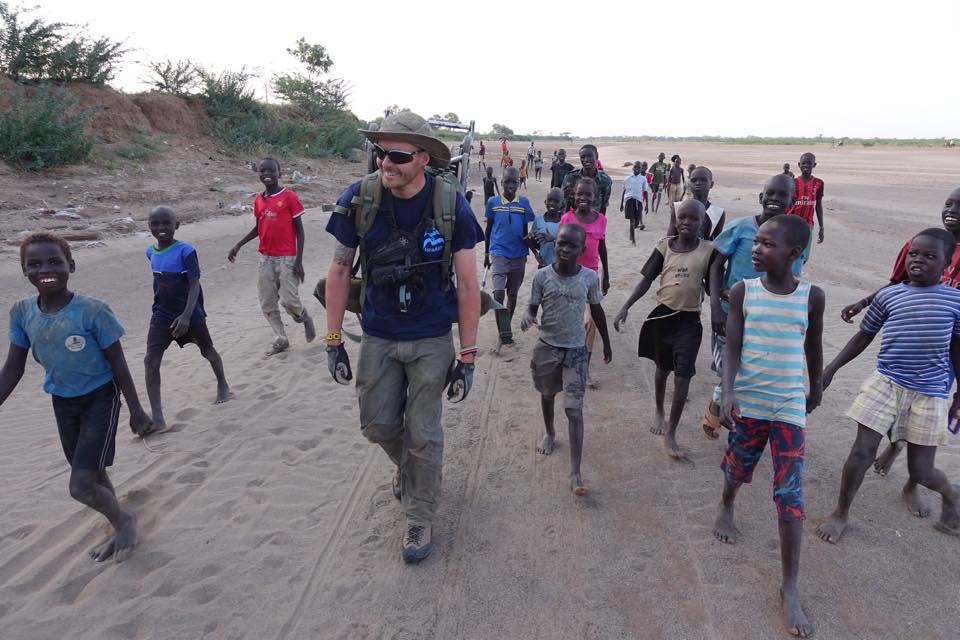 Geophysicist Landon Woods is carrying a 40 kg backpack with 250 m of cable, but I don’t think that is what he is smiling about. The children following Landon are mostly refugees, with a few Turkana. The Kakuma Refugee Camp is on the west side of Laga (dry river bed in Turkana) Tarach, with the host community Turkana living on the east bank as well as all other surrounding areas. After school, the Laga is full of hundreds of kids running, teaching themselves gymnastics moves, playing soccer, along with hauling water back to their homes…unless of course there is something much more fun to do, like watch Landon spool 1,000 m of cable and then carry it across the soft but burning sand in the oppressive afternoon heat. We use long arrays of cable for both our ERT (electrical resistivity tomography) and seismic refraction surveys. Though this is my third visit to Kakuma, last Sunday was my first opportunity to view the Nuer dancing of South Sudan. On my previous visits the dancing was cancelled because of inter-tribal violence or rain. As the only non-Nuer were the Calgary geophysicists and film crew, the event certainly was NOT put on for tourists. Besides maintaining cultural traditions while in a foreign land, the dances obviously also serve the function of providing an opportunity for young men and women to meet in a social environment. As such, many of the refugees appear in the finest clothes they can find. --Paul Bauman
KakumaMonday and Tuesday, January 11 and 12, 2016
We have divided into two crews of Calgary geophysicists, and each crew is working with 3 or 4 refugees and Turkana drawn from the IsraAID 2015 advanced WASH (Water, Sanitation, and Hygiene) class. The students are very keen. It is an opportunity to get more practical field training in what they learned in their previous 8 month course; they are provided breakfast (chai mendazi of course – milk tea and donuts) and a very filling lunch of ugali (maize paste), rice, vegetables, and goat meat; close interaction with the Calgary geophysicists; and pay of course. Both Monday and Tuesday we worked in the main laga (Turkana for wadi, or dry river bed), Laga Tarach. The open expanse of the Laga, the proximity to the Camp, the ease of driving along the river bed, and the large number of wells located along the Laga made it an ideal location to begin. On the Monday one crew collected 1.6 km of deep (120 m) looking electrical resistivity tomography (ERT) data imaging depth to bedrock, and therefore the areas of thickest water bearing sands and gravels. The other group did a similar survey, but looking less deep (70 m) with higher resolution. For both groups, things went fairly smoothly until late afternoon when thousands of school kids are released, and descend into the Laga to play soccer, roll tires, practice kung fu moves, and tag along with any geophysical survey that might be taking place. Tuesday was similar, except we broke into a seismic refraction and ERT crew. The refugee and Turkana students are catching on very quickly, operating the GPS units, the seismic source, laying cable, placing geophones, and essentially doing most elements of the field programs that we would normally be doing ourselves. KakumaSunday January 11, 2016
Jet lagged from the 10 hour time change, exhausted from the 60 hours of air travel and 4 hours of very tense driving, we jumped right to work. After a 7 AM typical Kakuma breakfast of chai mendazi – milk tea and African donuts - the 7 geophysicists and 2 person film crew split into two groups. 5 of us unpacked and checked the equipment shipped in 16 large wooden crates weighing 1400 kg. The other 4 of us packed into a 4X4 with one of the South Sudanese refugee WASH students, Michael, and traveled to approximately 30 water wells located in the Camp. These wells included a mix of hand dug boreholes, machine drilled deeper wells producing from bedrock and overburden sand aquifers, hand pump water wells, solar powered wells, wind powered wells, etc. The point of this reconnaissance was to map in the locations of as many boreholes as we could find so as we could tie our geophysical survey lines to points of known geology, water levels, water chemistry, etc. It also gave everyone an opportunity to acquaint themselves with one of the largest refugee camps in the world, the host Turkana community, working in 40 degree heat, and eating njere in the Ethiopian Market at the most notable eating establishment and coffee house of the Kakuma Refugee Camp, Franco’s. Saturday January 10, 2016
David Eggers, in his powerful and gripping biography/autobiography of one of the Lost Boys of Sudan, describes the 4 year journey on foot of 8 year old Valentino Achak Deng from a small village in Sudan to Kakuma. During his walk, Deng survives a massacre of his village by marauders on horseback, strafing and bombing by the Sudanese air force, attacks by lions, near death from starvation and thirst, being hunted down by the Ethiopian army, and of course many windstorms of utter hopelessness. Finally, in 1992, Deng arrives with thousands of Lost Boys to the newly opened Kakuma Refugee Camp. Nevertheless, Deng’s closest brush with death comes in 2001 on the drive from the Kakuma Refugee Camp to the County capital of Lodwar, where he is accompanying a youth basketball team from the Camp to a tournament, an exciting foray out of the Camp for all. The truck rolls, the much loved driver/fianced Japanese NGO worker is killed, Deng is unconscious and, along with others, badly injured and near death. Not only is this 123 kilometer stretch of highway (yes,this is part of the national highway system) noted for being the worst road in Kenya, but it has deteriorated significantly since Achak Deng drove the road in 2001. After 2 ½ days of flying to Nairobi, and then Lodwar, the geophysics crew departed Lodwar in three 4 X4’s at 5:30 PM. We survived the drive, largely by staying OFF the road and driving along parallel ditches, though we did get two flat tires, and arrived in Kakuma 3 hours after darkness at 9:30 PM. Our driver, John, who was in Kakuma in 2001, pointed out where Achak Deng’s truck rolled in 2001. |
Categories
All
Archives
August 2022
|
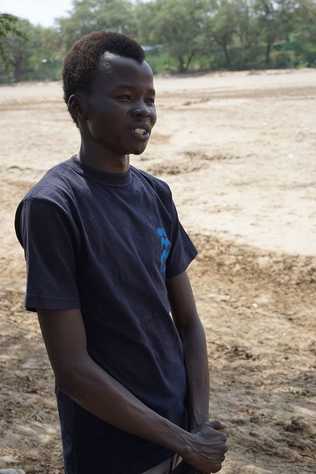
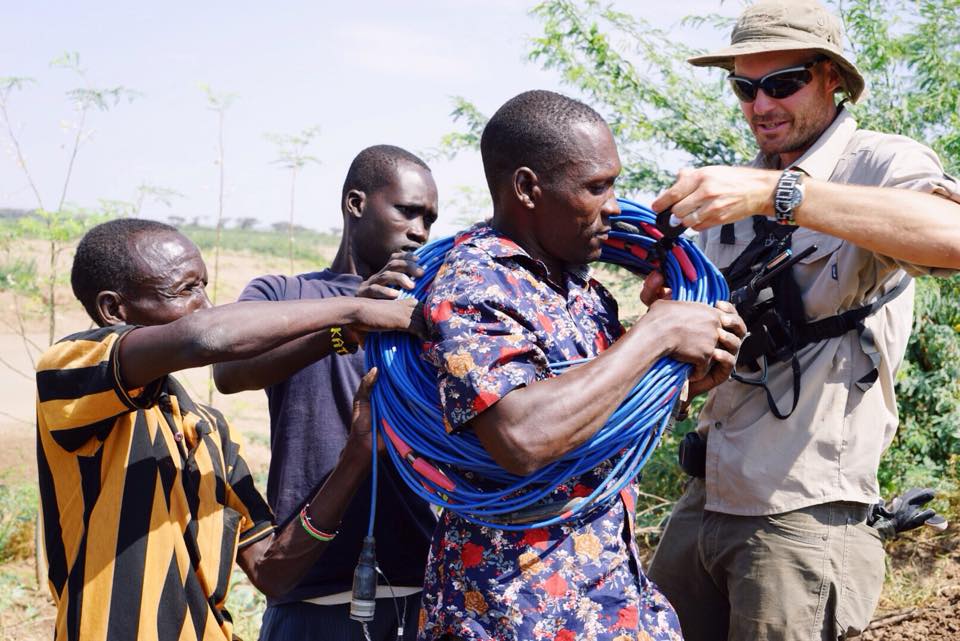
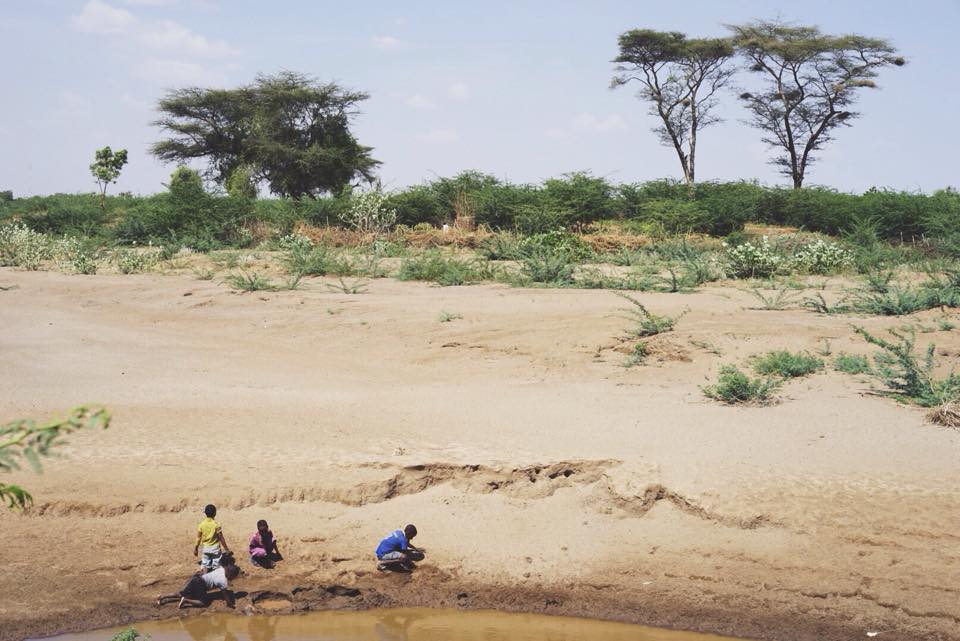
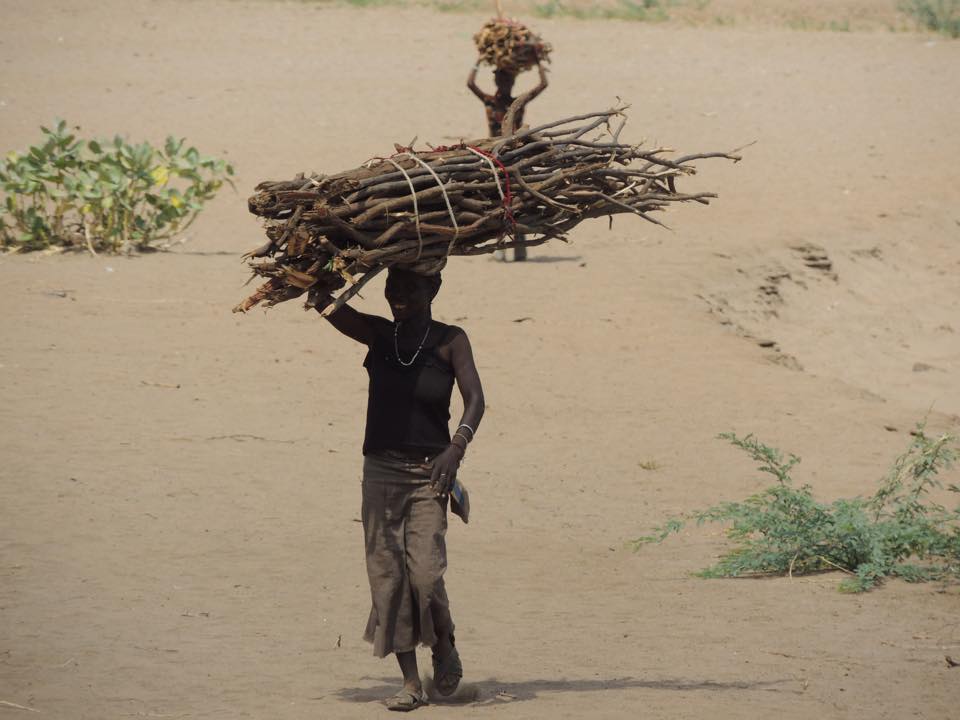
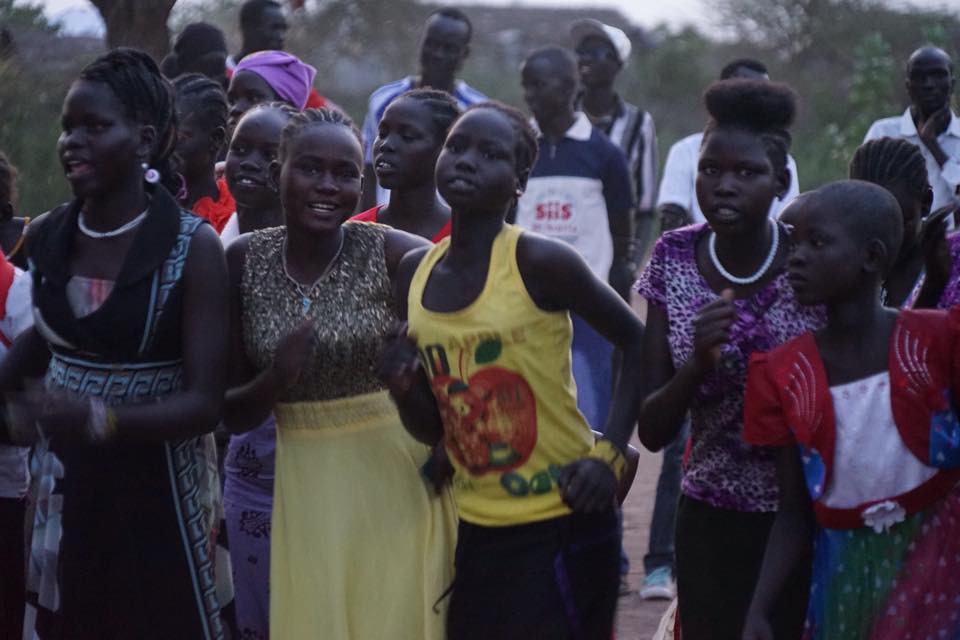
 RSS Feed
RSS Feed